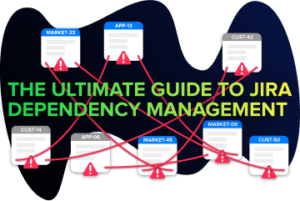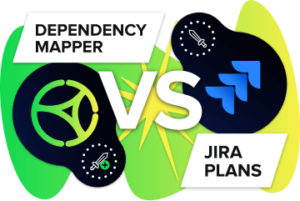There is little debate that Scrum is the default choice for many teams when it comes to adopting an agile methodology, and although the Scrum Guide is very explicit about what is (or isn’t) considered Scrum there is still a lot of misinformation out there about the role and responsibilities of a Scrum Master. Today we’ll explore what a Scrum Master does, how they fit into a Scrum Team and what the characteristics of a good Scrum Master are.
Table of Contents
ToggleWhat is Scrum and what are the benefits of using it
Scrum is an agile methodology that helps teams to be more productive and effective. The benefits of Scrum include:
- Increased productivity
- Fewer defects
- Shorter delivery cycles
- Better product quality
- Easier scalability
- Improved communication
- Enhanced customer satisfaction
The Scrum Master’s role in the Scrum team
A Scrum Master’s primary responsibility is to ensure that the Scrum framework is being followed and that the team is productive and effective. They do this by coaching the team, removing impediments, and helping to ensure that the Scrum values are being upheld. Scrum Masters also play a role in ensuring that the product backlog is groomed and that the team is consistently delivering value.
Scrum Masters should be able to facilitate communication within the team and between the team and stakeholders, and should be able to champion Scrum values and practices. They should also be able to build relationships with key stakeholders, as well as other teams within the organization.
What are the characteristics of a good Scrum Master?
There are a few key characteristics that make a good Scrum Master. They should be good coaches and facilitators, as well as be able to remove impediments and uphold Scrum values. Scrum Masters should also have strong communication skills, and be able to build relationships with stakeholders and other teams in the organization. They should also be familiar with Scrum best practices and common Scrum mistakes.
What are the common mistakes a Scrum Master should avoid?
There are a few common mistakes that Scrum Masters should avoid. One of the most common is allowing the Scrum process to become bogged down in bureaucracy. This can be done by insisting on rigid rules and procedures, or by spending too much time on administrative tasks instead of coaching the team and removing impediments.
Another common mistake is trying to do too much, which can lead to burnout. Scrum Masters need to be able to let go of control and allow the team to self-organize. They also need to be able to prioritize their work and focus on the things that will have the biggest impact.
Scrum Masters should also avoid micromanaging the team, and instead trust them to do their jobs.
Differences between a Scrum Master and a Project Manager
There are a few key differences between a Scrum Master and a Project Manager. The most obvious difference is that a Scrum Master is focused on the Scrum process and ensuring that the team is productive and effective, while a Project Manager is responsible for the overall success of the project and may have more of a traditional waterfall approach.
Another key difference is that the Scrum Master is not responsible for delivering the product, but instead coaches the team and helps to remove impediments. The Project Manager is typically responsible for tracking progress and ensuring that the project stays on track.
Scrum Masters should also be familiar with Scrum best practices and common Scrum mistakes, while Project Managers may not have as much experience with agile (although the role of an ‘Agile Project Manager’ is sometimes present in hybrid agile / waterfall environments where budgeting and scope are constrained).
Differences between a Scrum Master and an Agile Coach
The main difference between a Scrum Master and an agile coach is that a Scrum Master is focused on the Scrum process and ensuring that the team is productive and effective, while an agile coach is responsible for coaching the team and helping them to become more agile. An agile coach may also have more of a focus on training and mentoring, while a Scrum Master is more focused on the day-to-day Scrum process.
Scrum Masters should have deep expertise within the Scrum methodology, while agile coaches may have more experience with other agile methodologies like Kanban, SAFe or LeSS to name a few.
How to become a Scrum Master
The best way to become a Scrum Master is to first become a Scrum team member. This will give you a firsthand understanding of how Scrum works and how the Scrum Master’s role fits into the Scrum team. You can then pursue Scrum Master training, which will teach you the skills and knowledge you need to be a successful Scrum Master. There are a number of Scrum Master certification programs available, which can also be helpful in becoming a Scrum Master.
In Closing
A Scrum Master is responsible for the Scrum process and ensuring that the team is productive and effective. They should be able to coach the team and remove impediments, as well as be familiar with Scrum best practices and common Scrum mistakes. The role of a Scrum Master can be very rewarding, but it takes a lot of hard work and dedication to become successful. There are a number of Scrum Master certification programs available, which can help you in your journey to becoming a Scrum Master.
Want to enhance your agile reporting?
Are you a Jira user? Check out these apps that focus on themes like dependency management, scaled backlog views and WIP management to help your teams navigate and understand their complex environments!








